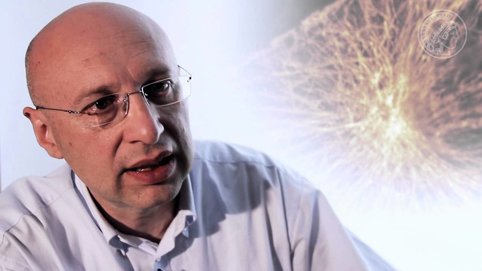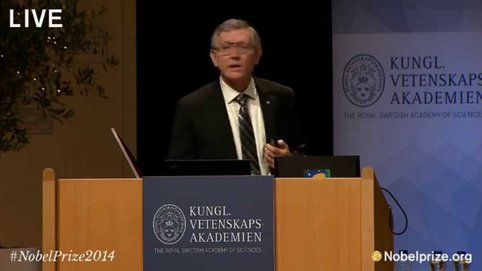Videos about Stefan Hell
Nobel Prize in Chemistry 2014
Portrait about Stefan Hell
STED - Insights into the nanoworld
Optical microscopes cannot distinguish between objects that are closer together than about 200 nanometers – about one two hundredth of a hair's breadth. The reason for this is the wave nature of light, the half wavelength of which roughly corresponds to those 200 nanometers. The STED microscopy developed by Stefan Hell is the first optical microscope technology to go beyond this magic barrier, enabling researchers to gain fascinating insights into the nanoworld.
https://www.youtube.com/watch?v=0NCNy6pVIZE
Video about the research
Sharper than theory allows
Previously, the law formulated by Ernst Abbe in 1873 was regarded as the absolute lower limit. Objects lying closer to each other than 200 millionths of a millimetre, i.e. about one two hundredth of a hair's breadth, can no longer be distinguished from one another. The STED microscopy developed by Stefan Hell allows scientists to gain insights into the nano world far beyond this limit. Biologists and physiologists in particular value this breakthrough, because living cells or tissue can only be observed using optical microscopes.
https://www.youtube.com/watch?v=Xx3uQyaQPss
Videos of the Nobel Week in Stockholm
Chemistry Nobel Lectures
The Nobel Prize in Chemistry – How the optical microscope became a nanoscope. Stefan W. Hell, Eric Betzig, and William E. Moerner; December 8, 2014
https://www.youtube.com/watch?v=CYSVd2qTfAk
Nobel Prize Award Ceremony 2014
Ceremony for the Nobel Prizes in Physiology or Medicine, in Physics, and in Chemistry in the Stockholm Concert Hall on December 10, 2014.
https://www.youtube.com/watch?v=YcctnSMvyYk
Interview with Stefan Hell
The Nobel Laureate describes his research in easy-to-understand terms.
https://www.youtube.com/watch?v=59w-kB4uxWg





